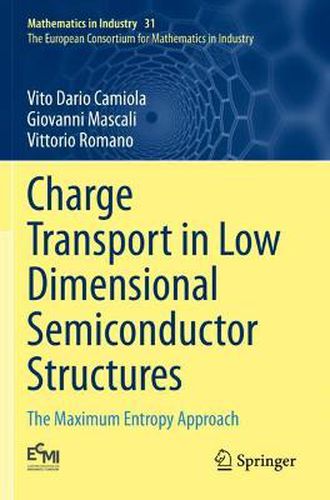Readings Newsletter
Become a Readings Member to make your shopping experience even easier.
Sign in or sign up for free!
You’re not far away from qualifying for FREE standard shipping within Australia
You’ve qualified for FREE standard shipping within Australia
The cart is loading…






This title is printed to order. This book may have been self-published. If so, we cannot guarantee the quality of the content. In the main most books will have gone through the editing process however some may not. We therefore suggest that you be aware of this before ordering this book. If in doubt check either the author or publisher’s details as we are unable to accept any returns unless they are faulty. Please contact us if you have any questions.
This book offers, from both a theoretical and a computational perspective, an analysis of macroscopic mathematical models for description of charge transport in electronic devices, in particular in the presence of confining effects, such as in the double gate MOSFET. The models are derived from the semiclassical Boltzmann equation by means of the moment method and are closed by resorting to the maximum entropy principle. In the case of confinement, electrons are treated as waves in the confining direction by solving a one-dimensional Schroedinger equation obtaining subbands, while the longitudinal transport of subband electrons is described semiclassically. Limiting energy-transport and drift-diffusion models are also obtained by using suitable scaling procedures. An entire chapter in the book is dedicated to a promising new material like graphene. The models appear to be sound and sufficiently accurate for systematic use in computer-aided design simulators for complex electron devices. The book is addressed to applied mathematicians, physicists, and electronic engineers. It is written for graduate or PhD readers but the opening chapter contains a modicum of semiconductor physics, making it self-consistent and useful also for undergraduate students.
$9.00 standard shipping within Australia
FREE standard shipping within Australia for orders over $100.00
Express & International shipping calculated at checkout
This title is printed to order. This book may have been self-published. If so, we cannot guarantee the quality of the content. In the main most books will have gone through the editing process however some may not. We therefore suggest that you be aware of this before ordering this book. If in doubt check either the author or publisher’s details as we are unable to accept any returns unless they are faulty. Please contact us if you have any questions.
This book offers, from both a theoretical and a computational perspective, an analysis of macroscopic mathematical models for description of charge transport in electronic devices, in particular in the presence of confining effects, such as in the double gate MOSFET. The models are derived from the semiclassical Boltzmann equation by means of the moment method and are closed by resorting to the maximum entropy principle. In the case of confinement, electrons are treated as waves in the confining direction by solving a one-dimensional Schroedinger equation obtaining subbands, while the longitudinal transport of subband electrons is described semiclassically. Limiting energy-transport and drift-diffusion models are also obtained by using suitable scaling procedures. An entire chapter in the book is dedicated to a promising new material like graphene. The models appear to be sound and sufficiently accurate for systematic use in computer-aided design simulators for complex electron devices. The book is addressed to applied mathematicians, physicists, and electronic engineers. It is written for graduate or PhD readers but the opening chapter contains a modicum of semiconductor physics, making it self-consistent and useful also for undergraduate students.